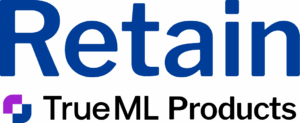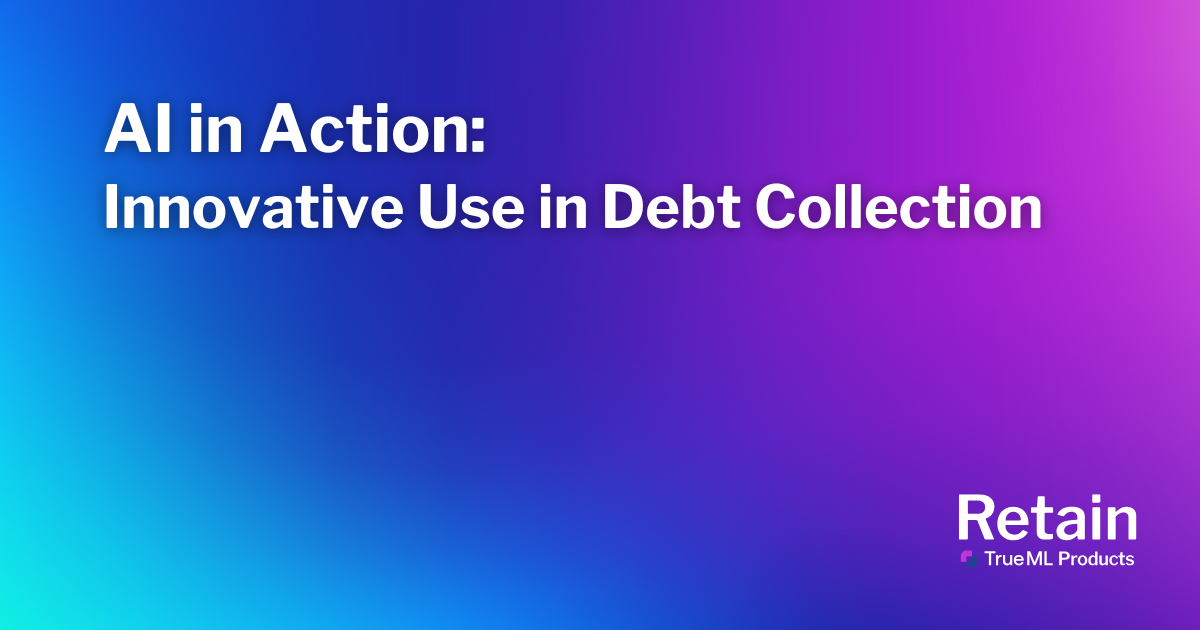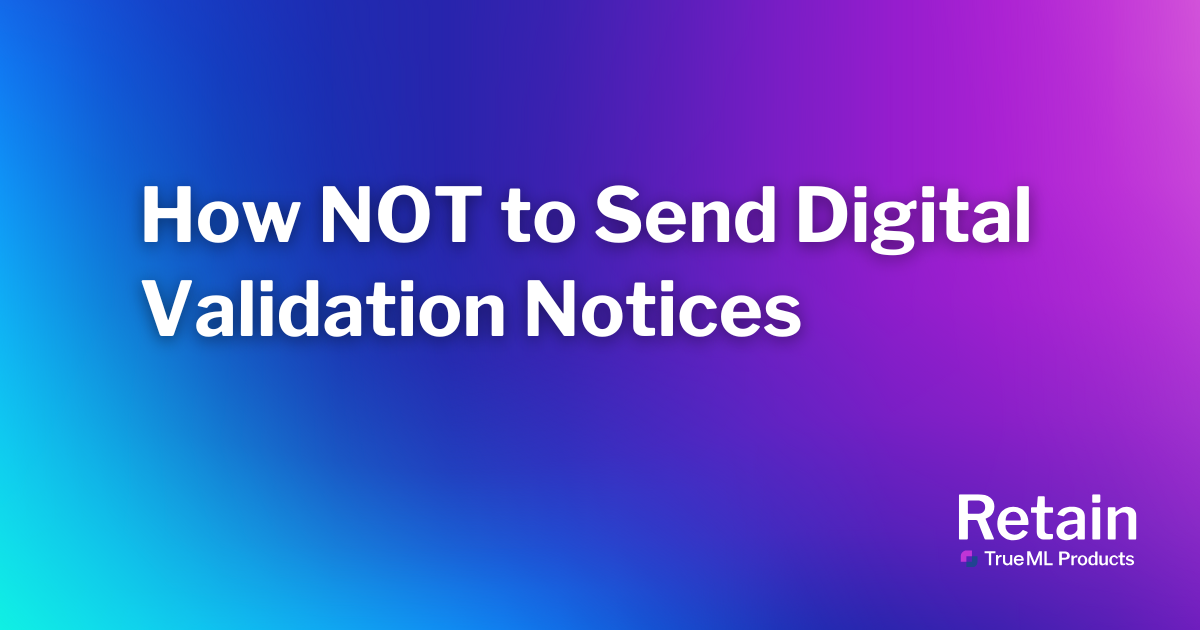Once upon a time, the option to receive bank statements by email was a novel and groundbreaking idea, but consumer expectations for more and better digital experiences have evolved in pace with the technology. Consumers today expect more from their digital experiences, especially in financial matters—71% of consumers now expect a personalized experience even in debt collection. The challenge for businesses engaging with consumers digitally has become not if they should, but how they can do so at scale effectively. Artificial intelligence (AI) offers a solution.
We recently hosted a webinar with Thomas Overton, Chief Product & Technology Officer at TrueML, to learn more about using debt collection machine learning tools to meet this challenge—read on to get an overview of the key insights shared.
What Kind of AI is Used in Debt Collection and How?
AI is a broad field that refers to the use of technologies to build machines and computers that have the ability to mimic cognitive functions associated with human intelligence. Most people are familiar with ‘Generative AI’, which has become popular with ChatGPT and similar programs that create new content (images, text, sound, etc.). Generative AI is a type of ‘Deep Learning’, in which a stack of layers is used to transform input data into a slightly more abstract and composite representation.
For example, if your generative AI request is “write an email message reminding a customer of their past-due account in a friendly, helpful tone,” the request would pass through layers of neural networks, with each layer pulling in available data to inform the related aspect. The output will give you a good jumping off point, albeit one that could still use human editing.

Deep learning and generative AI are built on the back of ‘Machine Learning’. Machine learning (ML) is a subset of AI that automatically enables a machine or system to learn and improve from experience. Instead of explicit programming, machine learning uses algorithms to analyze large amounts of dat. learn from the insights, and then make informed decisions.
In debt collection, AI is already used in myriad ways, from customer segmentation and propensity-to-pay analytics to personalizing communications and recommending communication channels. Debt collection machine learning strategies are put into practice by businesses today. For example, Retain by TrueML Products uses debt collection machine learning to pull insights from millions of customer interactions and select digital repayment communications that are more likely to engage your customers.
In fact, as of 2023, 60% of third-party debt collection companies were in some stage of the deployment path to use AI or ML-based technology in some way. Though the type of AI implementation may vary by company and use, they all share a common goal: optimize consumer engagement to drive debt repayment.
How Does Debt Collection Machine Learning Solve Common Business Challenges?
Going back to consumer expectations, we can see how machine learning in debt collection can address the personalization-at-scale challenge in a number of ways:
- Content: What message will appeal to and compel a customer to read and respond?
- The debt collection focused machine learning feedback loop determines which message is more likely to resonate based on data points that align with each individual customer.
- Channel: Which is the best channel to reach out to a customer: phone, email, SMS, or something different?
- Faster than a human can analyze, an ideal channel is selected based on the customer and in the process it will create new learnings to influence future decisions.
- Time: How can I reach a customer at just the right moment and within compliance guidelines?
- ML learns the most appropriate contact times to spur action and recalibrates timing if the first outreach doesn’t land while adapting to regulatory compliance, which can be the difference between no engagement and recovering funds.
- Resource Optimization: How do you determine how much effort to spend per customer and what that effort looks like?
- An optimal debt collection machine learning strategy takes business outcomes, liability considerations and resources into account to build an outreach plan to optimize your margins.
- Financial Optimization: How do you create a compelling payment offer to maximize revenue and margins on accounts?
- AI can optimize offers and negotiations across portfolios to maximize the leverage of payment plans and discounts.
- Customer Experience: Is your customer treated in the debt collection experience in a way that reflects well on your brand?
- Customer-preferred channels, intuitive messaging and self-serve options create a better overall customer experience, leading to better retention and lifetime value of customers.
“By leveraging AI and machine learning to personalize the debt collection experience for consumers, we can shift the incentivization structure. When you scale through technology, you can operate at better margins while operating in a manner that is more consumer centric, as opposed to having a workforce of many individuals who are trying to compel action.”
– Thomas Overton, Chief Product & Technology Officer, TrueML
Using AI for Champion/Challenger Testing in Messaging
Whether your customer messaging is written by a human or a generative AI program, you can leverage artificial intelligence to easily test and optimize your content. Machine learning tools in debt collection can run A/B tests at scale. As more engagement data is collected, you’ll get a clear idea of how to adjust the tone of your messages, use the right call to action (CTA) and send at an optimal time of day.
Beyond comparing open rates and subject lines, AI provides advanced ability to A/B test messaging at scale and personalize based on user behaviors prior, during and after an email is sent. Messaging test variables can include subject lines and previews, tone of voice, CTAs, personalization, design and visuals, and delivery time. AI works, analyses and acts quicker than humans and can seamlessly multivariate test and incorporate several changes in one version.
“This all evolves to a point where AI can actually identify tests to be run. You can essentially put it into an auto mode where it identifies opportunities to trigger and conduct tests, and do it at scale with the appropriate rules or configuration parameters you want to apply.”
– Thomas Overton, Chief Product & Technology Officer, TrueML
Compliance Considerations for Using Machine Learning in Debt Collection
AI is a rapidly evolving technology and is outpacing the regulatory scope. However, the Consumer Financial Protection Bureau has made it clear that products and services built with innovative technologies must conform with existing consumer protection laws and regulations.
The Fair Debt Collection Practices Act (FDCPA) / Regulation F dictate rules for debt collection activities, along with various state and local laws, including validation checks, time and frequency of communication, required message content, required disclosures, clear and conspicuous unsubscribe, monitoring deliverability, and collector identification details. Compliance checkers in an AI-powered system can ensure compliance with these regulations, eliminating human error while code-based guardrails can be easily updated to reflect the latest updates to rules.
“Our ML system codifies regulation, making sure that any intent, any optimization and any decisioning goes through a compliance check. Supporting all of those requirements really ensures being consumer-first, making sure that the debt collection experience is clear, articulate, and low friction for the customer as it relates to any of these particular compliance needs.”
– Thomas Overton, Chief Product & Technology Officer, TrueML
Using AI to Boost Customer Engagement, from First Delinquency to Default
AI in third-party debt collection is quickly becoming table stakes for better customer engagement and repayment results. But the benefits of top-notch customer engagement can go even farther for early delinquency. With ready-to-use, white-labeled AI-driven software, companies can now easily deploy the same best-in-class digital engagement methods to manage their own in-house delinquency communications and reap the benefits of positive brand experiences and pre-charge off repayment.
Retain by TrueML Products offers an AI-driven, ready-to-use digital communication platform that businesses across industries use to better engage customers in early stages of delinquency and recover more, sooner. Retain’s machine learning engine is informed by millions of customer interactions to optimize the content, channel and time for past-due communications, and can quickly scale to any portfolio volume.
Retain’s machine learning engine is also informed by a highly experienced compliance team with more than 50 years of industry expertise. When regulations or case law evolves, and it impacts systems that rely on them, your programs require tweaking to stay in compliance. Monitoring changing regulations at the federal level is one thing, but ensuring you’re complying with various state and local regulations across geographies takes a lot more effort. By using code-based compliance checks informed by legal expertise, you can take the human error element out of the equation and easily refine the system’s guardrails as needed.



